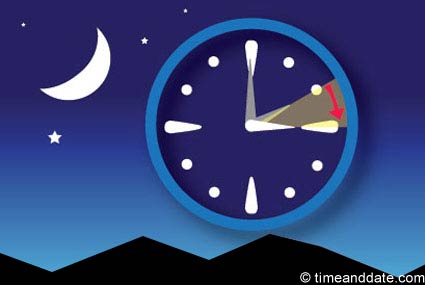
Daylight Saving Time (or summertime as it is called in many countries) is a way of getting more light out of the day by advancing clocks by one hour during the summer. During Daylight Saving Time, the sun appears to rise one hour later in the morning, when people are usually asleep anyway, and sets one hour later in the evening, seeming to stretch the day longer.
Why Observe DST?
Many countries observe DST, and many do not. The reason many countries implement DST is in hopes to make better use of the daylight in the evenings, as well as some believe that it could be linked to reducing the amount of road accidents and injuries. The extra hour of daylight in the evening is said to give children more social time with friends and family and can even boost the tourism industry because it increases the amount of outdoor activities.
DST is also considered as a means to save energy due to less artificial light needed during the evening hours—clocks are set one hour ahead during the spring, and one hour back to standard time in the autumn. However, many studies disagree about the energy savings of DST and while some may show a positive outcome of the energy savings, others do not.
It is difficult to predict what will happen with Daylight Saving Time in the future. The daylight saving date in many countries may change from time to time due to special events or conditions.The United States, Canada and some other countries extended DST in 2007. The new start date is the second Sunday in March (previously the first Sunday in April) through to the first Sunday in November (previously the last Sunday in October).
Did You Know?
- Russia reduced their number of time zones from eleven to nine and are considering getting rid of daylight saving time in 2011.
- Egypt changed their clocks four times last year, which means that they observed DST twice in 2010.
- The United Kingdom may switch to Single Double Summer Time, which would move the UK to UTC+1 in the winter time and UTC+2 during the summer time.
- Northern Mexican border cities share the same DST plan as the United States rather than most of Mexico.
Is DST always one hour ahead of normal time?
Today it is almost always one hour ahead, but throughout history there have been several variants on this, such as half adjustment (30 minutes) or double adjustment (two hours), and adjustments of 20 and 40 minutes have also been used. A two-hour adjustment was used in several countries during the 1940s and elsewhere at times.
A half adjustment was sometimes used in New Zealand in the first half of the 20th century. Australia's Lord Howe Island(UTC+10:30) currently follows a DST schedule that moves its clocks forward half an hour to UTC+11, which is Australian Eastern Daylight Time (AEDT) when it is on DST.
(from timeanddate.com)
No comments:
Post a Comment